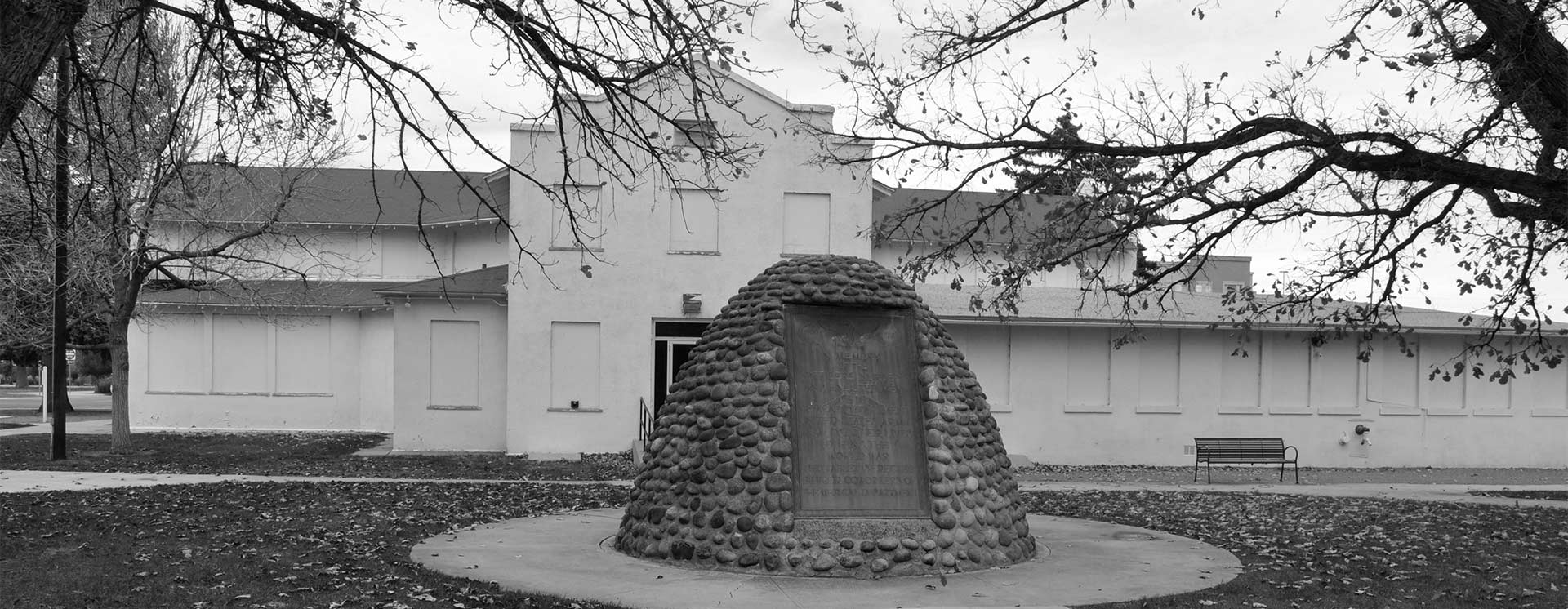
World War One Sites - The NETWORLD Database
“War Nailing Gate” (town hall of the borough of Melk), Lower Austria, Austria
In Melk the town authorities decided to install a “defence gate”, suggested by the academic painter Ernst Stöhr and according to his design. This was intended to be decorated with nails for the benefit of the widow and orphan fund, and as a visible sign of donations given and the willingness to make sacrifices. The gate wing was positioned into place in August 1915. According to the generosity of their donation, donors were allowed to attach a nail or a small copper plate with their name.
Austria, Lower Austria
Type of WWI-heritage
- Non-Military Site of World War One Relevance
Dimensions
The entrance gate to the town hall of the borough of Melk measures 2.5 x 3 metres.
State of repair/preservation
The gate is in a good condition.
Historical WWI Context
From spring of 1915, many towns and villages in the Austro-Hungarian monarchy set up wooden figures to be decorated with nails if a donation was given to the war welfare fund. The initial impulse for this was supplied by the “soldier in iron” presented in Vienna on 6 March 1915. In addition to soldiers, military signs and crosses, other objects were also used for nailing purposes, e.g. figures of historical personages, forges, holy figures and animals as well as tables and doors.
The number of nailing actions suddenly increased from April 1915 – they also fulfilled an important social function by appealing to the common call for holding out. The time between July 1915 and April/May 1916 was deemed to be the “zenith” of these nailing campaigns.
In Melk the town authorities decided to install a “defence gate”, suggested by the academic painter Ernst Stöhr and according to his design. This was intended to be decorated with nails for the benefit of the widow and orphan fund, and as a visible sign of donations given and the willingness to make sacrifices. The gate wing was positioned into place in August 1915. According to the generosity of their donation, donors were allowed to attach a nail or a small copper plate with their name. In March 1919, 4,077 crowns were transferred to the fund.
According to an Austrian source of the time, around 700 iron soldier and iron sign campaigns were carried out in Austria up to June 1916.
Recent Images
Historical Images
State of legal protection
The town hall gate is not under protection.
Owner
The town hall gate is owned by Melk town council.
Kind of cultural use of WWI
No touristic use.
Opening
The entrance gate to the town hall is situated in the old town area of Melk and can be viewed for free.
Entrance Fee
The entrance gate to the town hall is situated in the old town area of Melk and can be viewed for free.
Information regarding cities, villages, other touristic attractions (non-WWI) nearby
Accomodation
Further information:
City of Melk: www.hotels-und-pensionen.at/niederoesterreich/hotels_melk
Wachau: wachau-urlaub.com
Public Transport
Further information:
ÖBB: www.oebb.at
Further information sources
Publicationen:
Alfred Benesch & Gerhard Floßmann (Hg.), Vor-Stadt. Melk 1848–1898, Melk (2008).
Gerhard Floßmann, Melk an der Donau. Stadtführer, Melk (2000).
Hans-Christian Pust, Vergessenes Phänomen. Kriegsnagelungen in Österreich, Deutschland und darüber hinaus, in: Christian Rapp & Peter Fritz (Red.), Jubel & Elend. Leben mit dem Großen Krieg 1914–1918. Ausstellungskatalog, hg. v. d. Schallaburg Kulturbetriebsges.m.b.H., Schallaburg (2014), S. 298–301.
Other heritage sites nearby
- Bridgehead Krems, base Göttweiger Mountain, Lower Austria, Austria
- Commando building and main building of the POW camps in Valley Erlauftal: camp Wieselburg, camp Purgstall and station for captive officers Mühling in Lower Austria, Austria
- Russian Orthodox chapel in Zagging, Lower Austria, Austria
- Crypt of Archduke Franz Ferdinand in Castle Artstetten, Lower Austria, Austria
Museums Private Collections
Erzherzog Franz Ferdinand Museum Schloss Artstetten (near Pöchlarn) Heeresgeschichtliches Museum (HGM), Vienna |
“War Nailing Gate” (town hall of the borough of Melk), Lower Austria, Austria
48.22730269924853 15.332179650797456 fileadmin/res/images/layout/standar-marker.pngLocation

